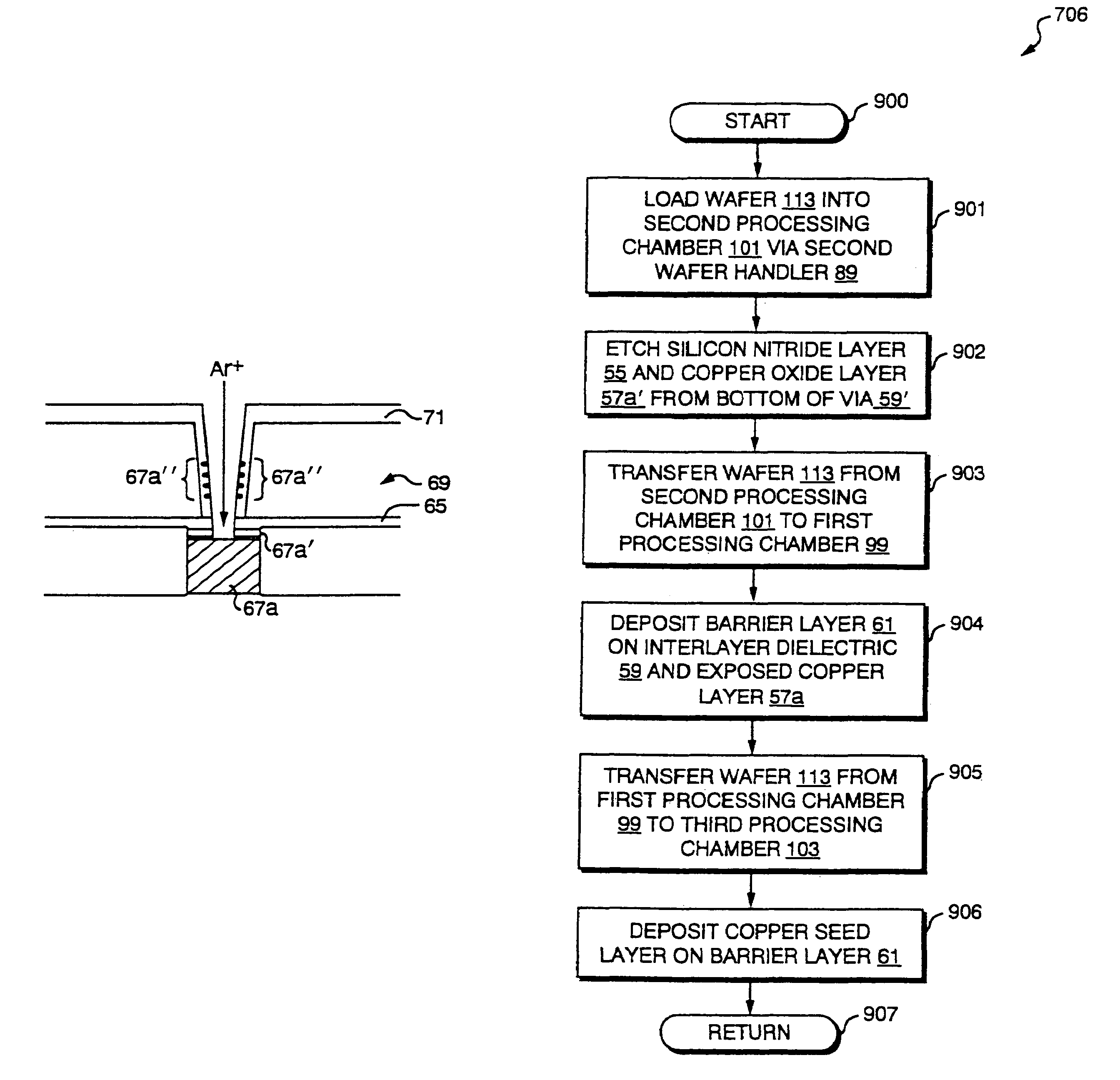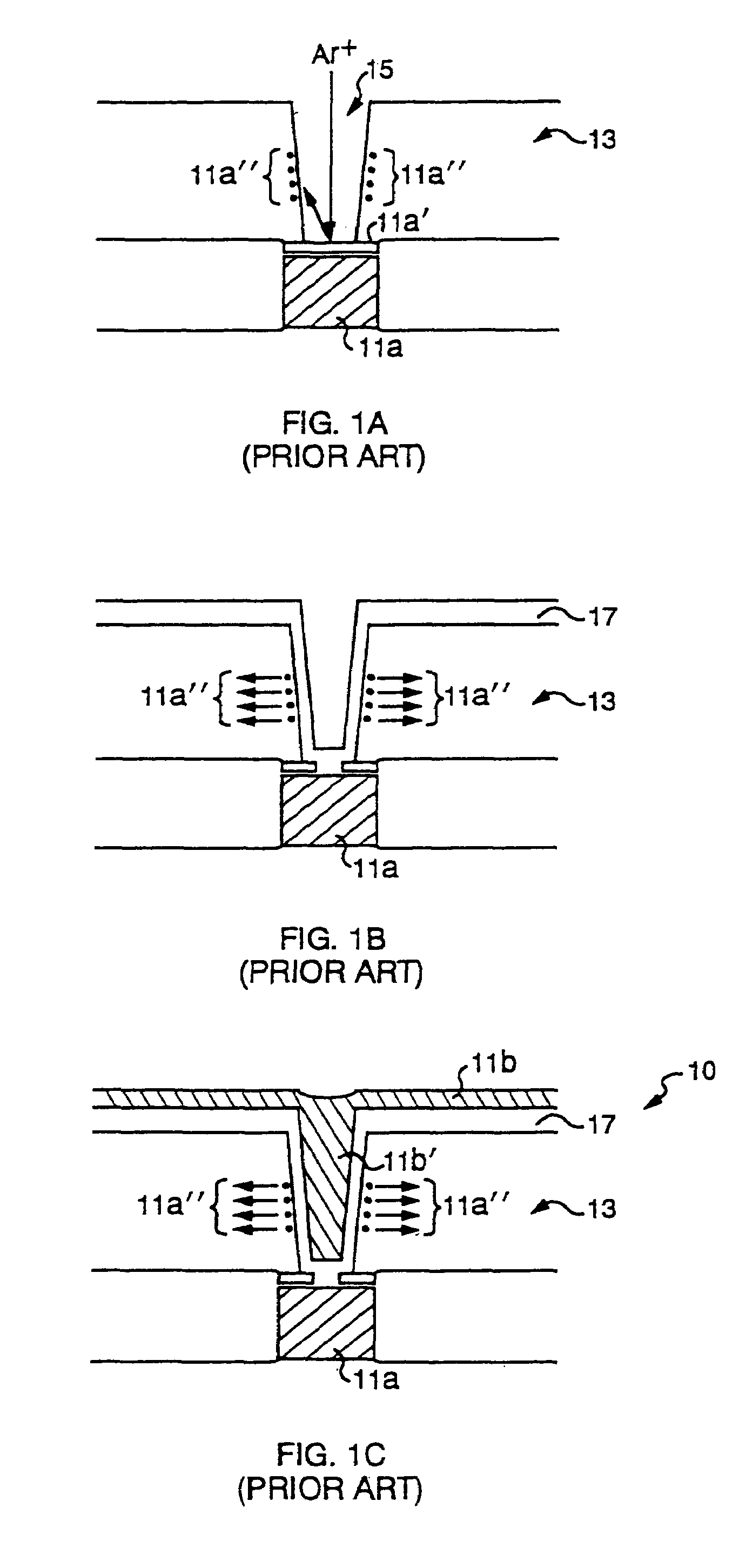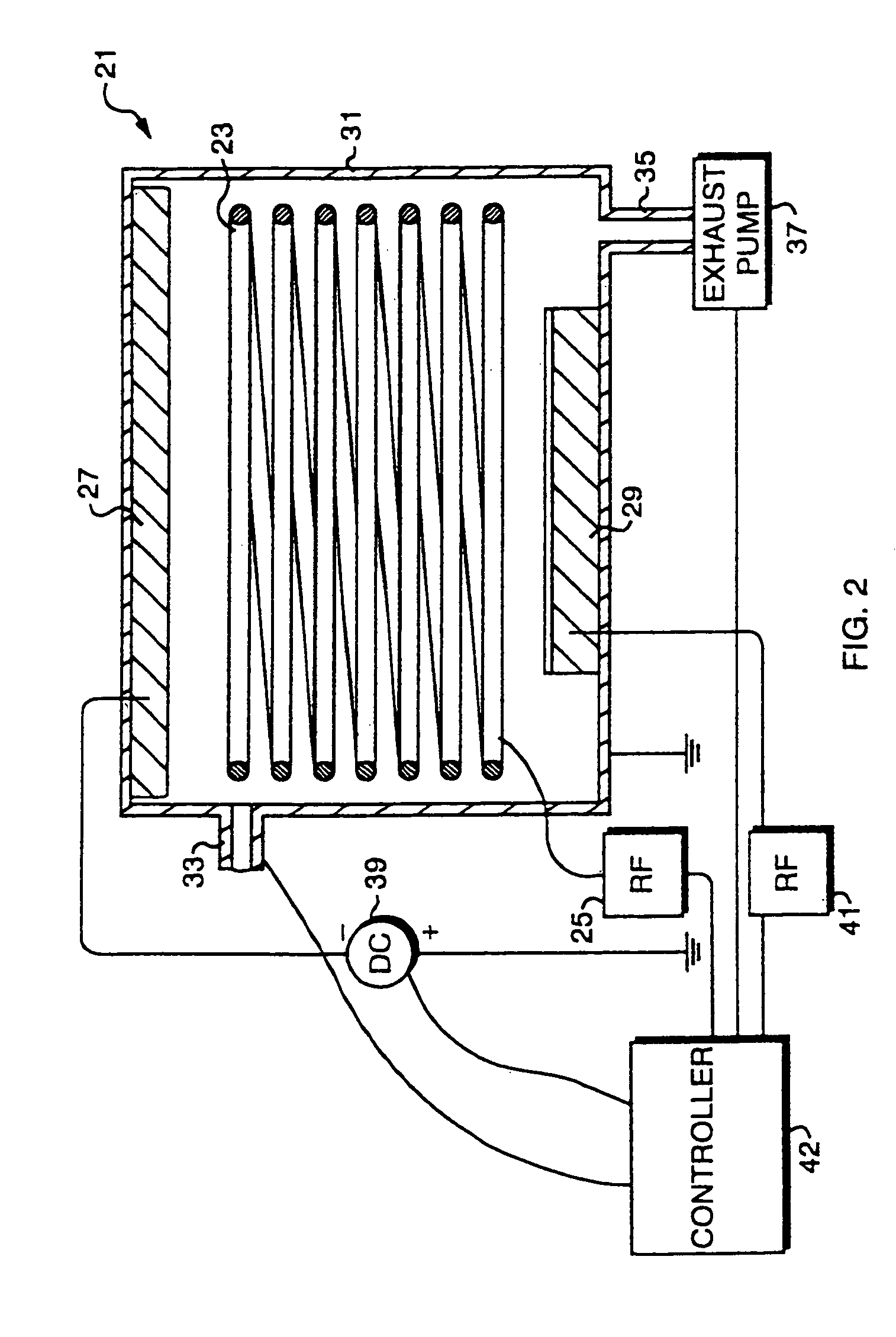Method and apparatus for forming improved metal interconnects
- Summary
- Abstract
- Description
- Claims
- Application Information
AI Technical Summary
Benefits of technology
Problems solved by technology
Method used
Image
Examples
Embodiment Construction
[0030]In the preferred aspects of the present invention, copper interconnect formation is performed primarily within a high density plasma sputtering chamber (although interconnect vias may be filled by a process for filling vias, such as chemical vapor deposition (CVD), physical vapor deposition (PVD) or electroplating as is known in the art). Accordingly, before discussing the preferred aspects for copper interconnect formation, the operation of such a high density plasma sputtering chamber is described briefly with reference to FIG. 2.
[0031]FIG. 2 is a side diagrammatic illustration, in section, of the pertinent portions of a high density plasma sputtering chamber 21 for practicing the present invention. The sputtering chamber 21 contains a wire coil 23 which is operatively coupled to a first RF power supply 25. The wire coil 23 may comprise a plurality of coils, a single turn coil as shown in FIG. 2, a single turn material strip, or any other similar configuration. As shown in F...
PUM
 Login to View More
Login to View More Abstract
Description
Claims
Application Information
 Login to View More
Login to View More - R&D
- Intellectual Property
- Life Sciences
- Materials
- Tech Scout
- Unparalleled Data Quality
- Higher Quality Content
- 60% Fewer Hallucinations
Browse by: Latest US Patents, China's latest patents, Technical Efficacy Thesaurus, Application Domain, Technology Topic, Popular Technical Reports.
© 2025 PatSnap. All rights reserved.Legal|Privacy policy|Modern Slavery Act Transparency Statement|Sitemap|About US| Contact US: help@patsnap.com



